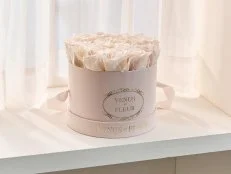Mill Food Recycler Review: This High-Tech Alternative to Composting Generates Less Mess in Less Time
For an avid composter and gardener, it’s a promising new solution. But is it worth the high price?

Courtesy of Mill
Mill recycles daily food scraps and turns them into valuable food grounds, quickly and quietly.
I’ve been composting at home for at least 15 years, so saving food scraps and converting them into something useful for my garden has become a way of life. When I visit the homes of family and friends and realize they don’t compost, it truly feels bizarre and just wrong to me to throw vegetable scraps in the trash. I pride myself on taking my trash to the street no more than every other week because avid composting and recycling help us create so little waste for the landfill. So when I heard about Mill, a new system for reducing food waste, I decided to test it out. After more than six weeks of testing, here’s my review.
- It works fast
- No odors or mold
- Quiet
- Expensive
- Doesn't make compost
What Is Mill Food Recycler?
Mill is a food recycler. It takes kitchen scraps like vegetable peels and cores, extra salad or spaghetti, avocado and peach pits, rice, bread, egg shells and even some meat and bones and, using heat and a grinding technology, transforms them into fine, nutrient-rich grinds. The purpose of food recycling is to keep food scraps out of landfills and instead use them to enrich soils, positively impacting your garden and, ultimately, the climate. It’s designed to use energy (electricity) as efficiently as possible and uses machine learning to get more efficient over time.
Though it may sound like it, Mill is not a composter. The grounds can be mixed into compost, worked directly into garden soil, fed to backyard chickens, placed in curbside organics bins in cities that have them (mine does not), or sent back through the company to be distributed to and used by farmers. Food grounds are like a precursor to compost; they’re high in organic matter but have not yet been broken down by microbes into compost.
How to Use Food Grounds in Your Garden
To help homeowners understand how to use food grounds at home, Mill worked with a researcher to evaluate the properties of food grounds and their best usage in the garden and on lawns. Though it depends on the foods added to the bin, they found that food grounds generally had a low (more acidic) pH and more organic matter than finished compost. They encourage thinking of food grounds like “rocket fuel” for microbial processes in compost or soil. Learn more about the research findings and specific recommendations for using food grounds at home.
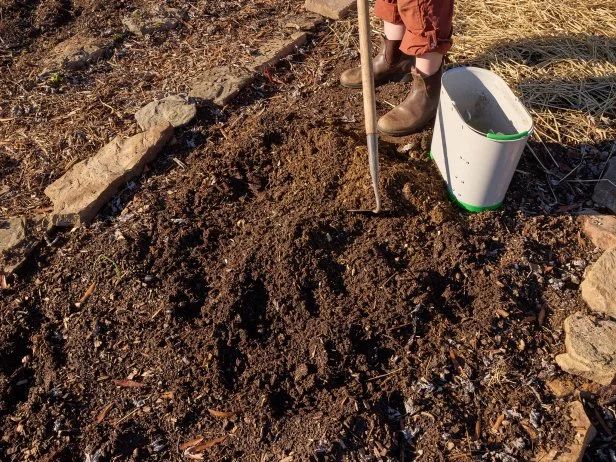
Derek R. Trimble
Mill grounds can be worked directly into garden soil as a nutrient-rich soil amendment.
How Does Mill Work?
Place kitchen scraps directly in Mill, which dries and grinds the food overnight, or whenever you set the cycle to run. (I set mine to start at 9 p.m. nightly.) While heating and grinding, the system locks down, indicated by a red light on the top and front; you can also add a pet or child safety setting to keep it extra secure. The dry and grind cycle slowly dries the food using heat and grinds it into smaller pieces. The time each cycle takes varies based on the moisture content of the scraps; wetter foods take longer, though it's discouraged to add very wet foods (like, say, soup). Moisture evaporates and is pushed through a filtration system that uses charcoal to neutralize odors, and then the air is moved out of the system through the bin’s exhaust fan.
Mill's Dry and Grind System
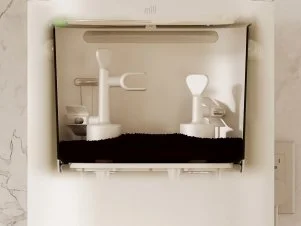
Food Scraps Before and After

How We Tested
I tested Mill in my home kitchen for about six weeks starting in mid-December. During that time, my Mill kitchen bin and I diverted 49 pounds of food waste from landfills, which I know from the handy Mill app. Mill claims to be odorless and effortless, so I was mostly concerned with testing these claims as well as the overall experience of using a food recycler versus collecting food scraps in a countertop container and adding them to my outdoor composting bin, which I’ve been doing for over a decade.
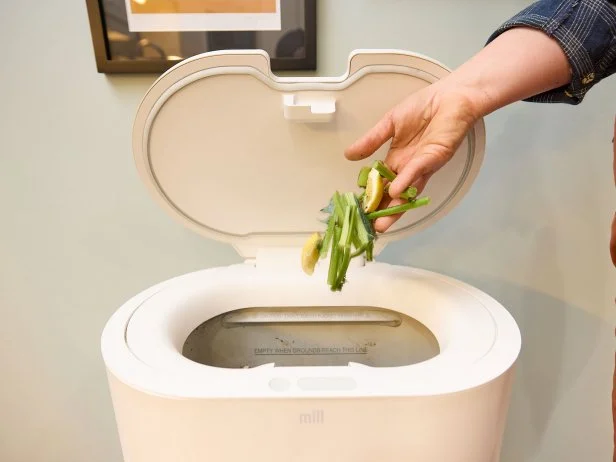
Derek R. Trimble
Setting up Mill was simple and straightforward. It’s a large, heavy appliance, about the size and shape of a tall kitchen trash bin, so my husband helped me lift it out of the box after delivery. We placed it along a wall in my kitchen near our kitchen island; in a larger kitchen, placing it at the end of an island would work well, too. The design of Mill and its wall plug makes it sit flush with a surface (wall or cabinetry), helping it integrate more seamlessly into a space without sticking out and being in the way. We thought it might be cumbersome in our small kitchen but it’s surprisingly not at all.
I followed instructions to download the Mill app to my phone and sync it to my bin. The app allows you to name your bin and then provides updates on the amount of food waste you’ve recycled as you go. It also has reference info for what foods to recycle and what not to, articles on how to use the grounds in your garden and lawn, and resource info for grounds pickup if you go that route. You can set up the app to send push notifications or not. I get annoyed by a lot of notifications, so I didn’t opt for them, but I did still get a notice when the bin was ready to be emptied, which is helpful. There’s also a physical reference point inside the bin that you can use to know it’s time to empty.
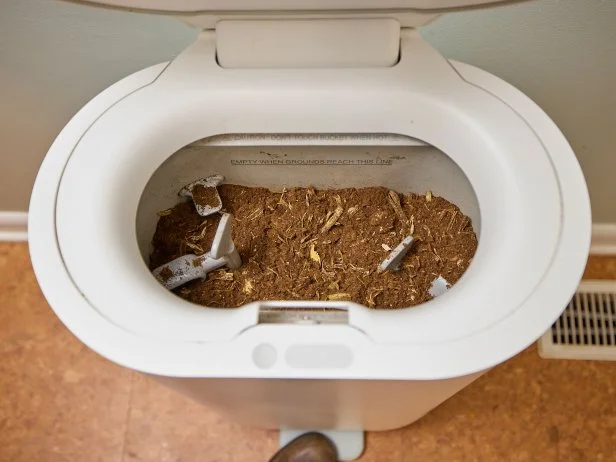
Derek R. Trimble
The Results
After the first night of food recycling, we were amazed at the resulting grounds. Mill breaks down food into small, dry pieces very quickly. Over time and as more food is added, the pieces break down smaller and smaller to look something like coconut coir or very dry dirt. It took about three weeks of adding food daily until it was time to empty the bin. I emptied it directly into my garden and worked it into the soil. It lightly covered about a 12-square-foot area. After emptying the first time, I replaced the bin to start the process over and it took about three more weeks to fill up again. Each time, it took about 25 pounds of food scraps to fill up the bin.
What We Liked About Mill Food Recycler
There are a lot of benefits of food recycling and Mill in particular. Here are my top points.
It works fast.
I recycled 24 pounds of food in the first two weeks of using Mill and was able to work the grounds directly into my garden soil. It’s hard to compare that with making compost, both because it takes me so much longer to make compost (like several months) and because the grounds aren’t compost. But, broadly speaking, Mill is much, much quicker.
There are no odors.
During the weeks I tested, I saw no evidence of mold in the bin and no bad smells. The grounds smell earthy and slightly acidic, but not bad by any means. In contrast to the practice of collecting scraps in a countertop compost bin to take outside for composting, it’s a major improvement. My countertop collector can sometimes get moldy and smelly if I don’t take scraps out often enough. Mill also takes things I don’t put in my compost bin, like avocado pits and citrus rinds, because they take too long to biodegrade.
It’s easy to clean.
But also, it rarely requires cleaning. When you lift the bin out and empty it, some grinds can fall into the metal chamber but it’s easy to just wipe them off. You can also just wipe the bin itself clean, but I never really needed to; in my experience, everything got so dry that the grounds just fell out and didn’t stick to the sides of the bin.
It’s not too loud.
The sound of Mill is not very noticeable. For the most part, it’s a low hum, though it can temporarily make some louder grinding noises if larger materials like pits or bones are added. One night, I added wetter food (leftover risotto) and it took a much longer time to dry, staying locked and in dry and grind mode through the next morning. It didn’t turn on that second night, taking a break to reset, but resumed the regular 9 p.m. schedule on the following (third) night. When the bin is full or close to being full, the grinding can be a little louder, but it’s never enough to be disturbing.
It looks good.
It’s sleek and white with a light wood-look top, which works well in our kitchen. If your kitchen style is more traditional or has darker cabinetry and flooring, it might stand out, but it looked nice and seamless in my modern kitchen with white cabinetry and countertops. I also like that it sits on the floor instead of the countertop, as I have limited counter space and need it all for food prep and other small appliances.
It’s currently made in North America.
The facility in Mexico is LEED-certified (meaning it is certified as a leader in sustainable, energy-saving design) and committed to health and safety of employees. Mill decided to manufacture in North America to cut down on greenhouse gas emissions associated with shipping the bins to customers largely in the United States. I appreciate that Mill keeps their manufacturing processes in line with the purpose of their product.
What the Mill Food Recycler Could Do Better
Of course, everything has downsides, and Mill is no exception.
It's expensive.
It costs $999, so it’s going to be a barrier for some would-be buyers. I should note that Mill did not give me a free product for testing; they sent one on loan, to be returned after testing. But I do plan on buying one. Mill currently has a $100 off offer on their website if you sign up for updates, making it $899. A competitor food recycler costs more in the $500 range, but it's smaller and sits on the countertop, which I don't want.
It only comes in one color.
White works for me, but it would be nice if they could also offer a black or dark gray version to suit a different design style, or maybe a tan or beige color that’s not so stark white. The downside to a darker color is that it might show dirt easily and need to be cleaned more often, but some customers might prefer that as a tradeoff for integrating better in their kitchen design.
It doesn’t make compost.
Using Mill is not a direct replacement for outdoor composting. As an avid gardener, I will still need to make or buy compost to enrich my garden. But the food grounds made by Mill will help with that process, and they can be used as soil or compost amendment. (Learn more about testing and amending garden soil.)
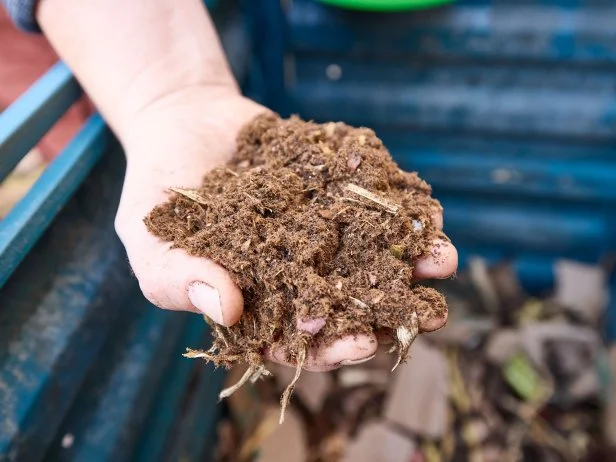
Derek R. Trimble
Mill grounds can be a valuable ingredient added to an outdoor compost bin, as I'm doing here, but don't confuse them with actual compost.
Who Should Buy This?
As mentioned above, the Mill I tested was on loan, but I plan to save up and buy my own. To me, it’s become a new essential kitchen appliance, so I justify the cost like a dishwasher or microwave — two things my grandparents never had either but that have become essentials for modern life. Mill is a valuable appliance that saves me time and energy, and it also aligns perfectly with two of my core values: reducing my carbon footprint and eliminating food waste. Mill is for anyone who composts or wants to compost, gardens or wants to garden and cares about how their choices impact the environment. It can also be for someone who just feels bad about throwing food away and wants to take the trash out less often, which Mill will certainly help with.



















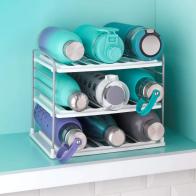



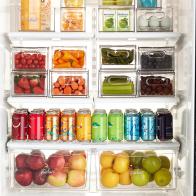








.jpg.rend.hgtvcom.196.196.suffix/1738869041672.jpeg)

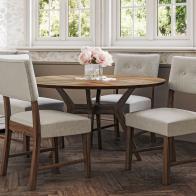




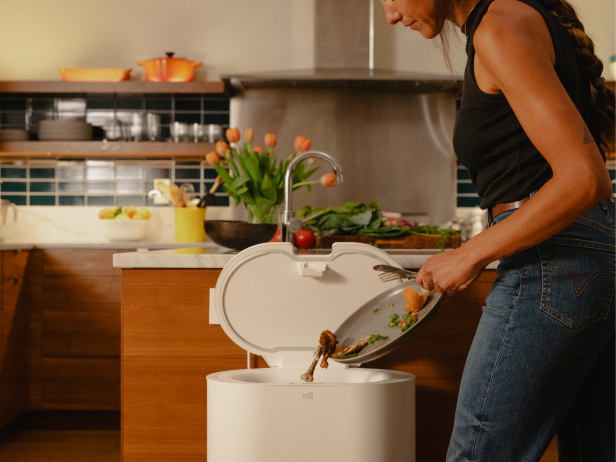

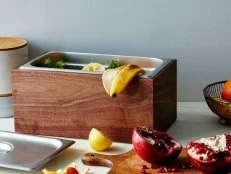







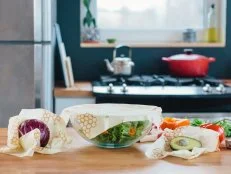


.jpg.rend.hgtvcom.231.174.85.suffix/1738869041672.webp)

















